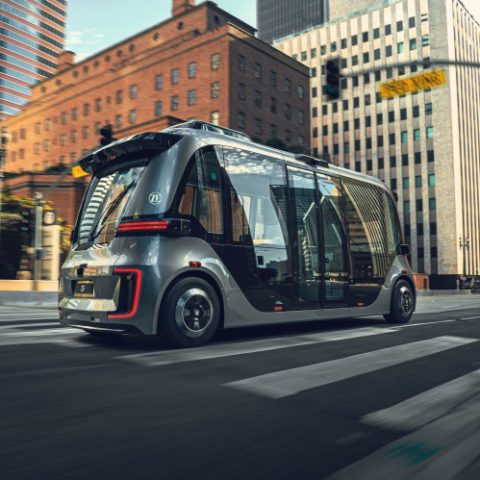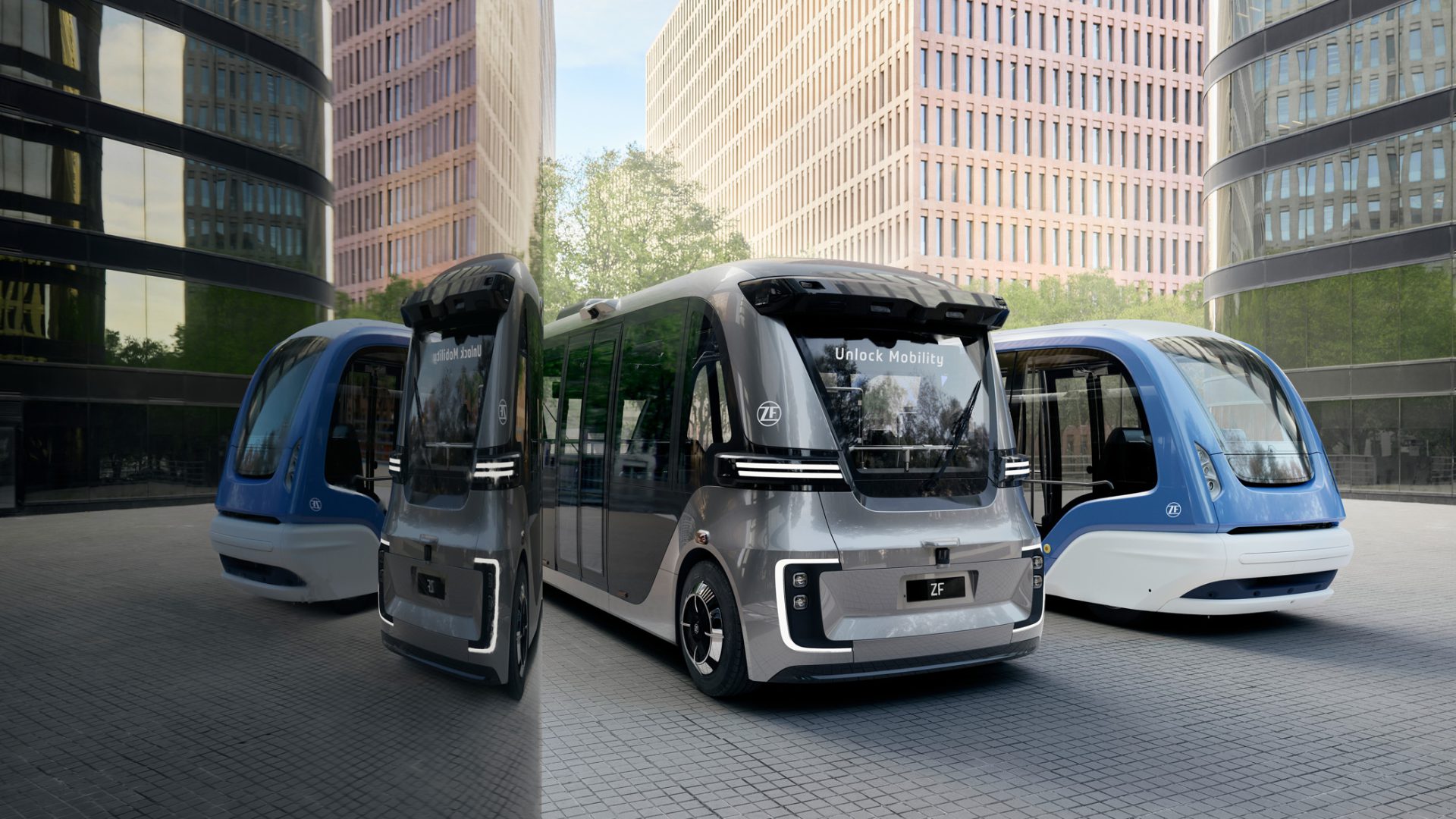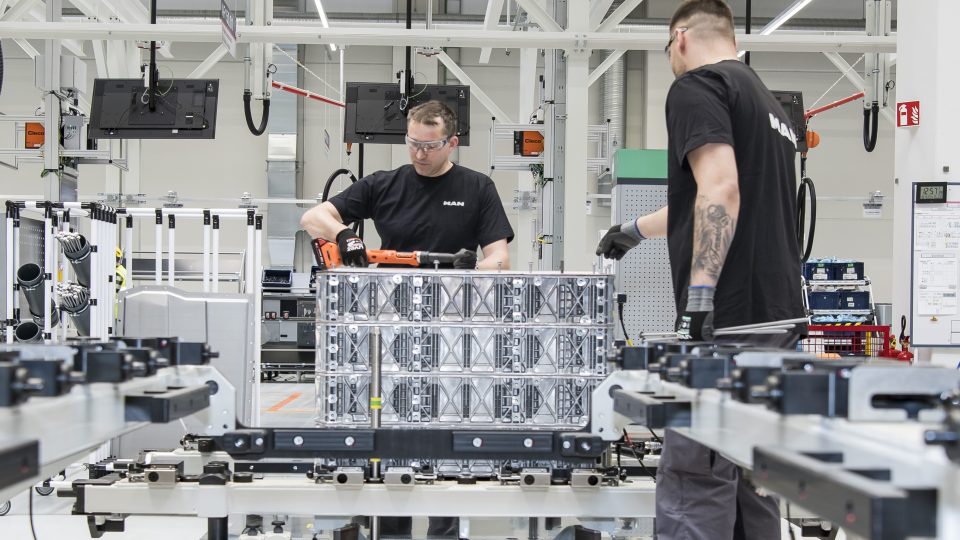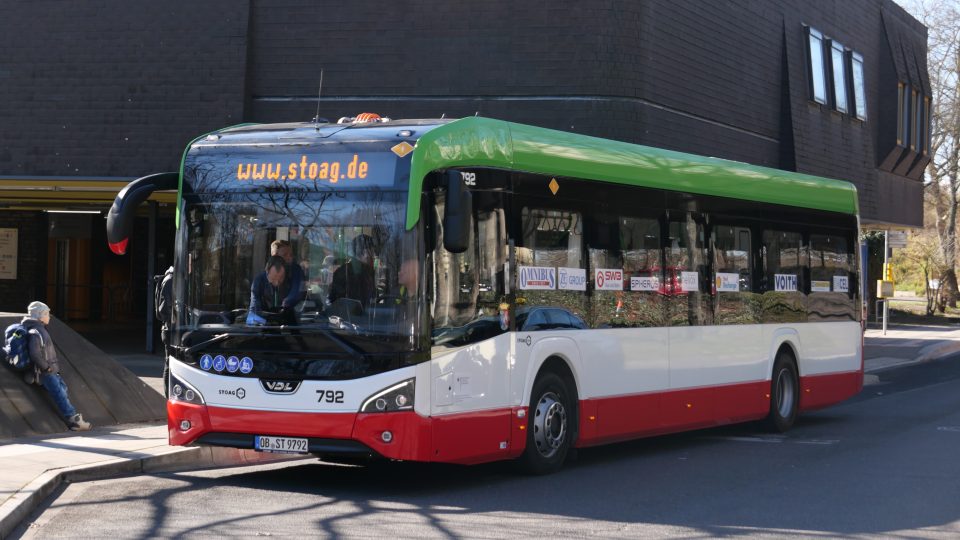ZF launched new generation driverless shuttle in cooperation with Beep (thus doubling its autonomous offer)
ZF has unveiled its next generation autonomous shuttle. They claim it is built for operations “in urban environments and mixed traffic” and features Level 4 capabilities. It is developed in cooperation with U.S. mobility services provider Beep. The partnership between the German giant and Beep has been unveiled at the 2023 Consumer Electronics Show (CES) […]

ZF has unveiled its next generation autonomous shuttle. They claim it is built for operations “in urban environments and mixed traffic” and features Level 4 capabilities. It is developed in cooperation with U.S. mobility services provider Beep.
The partnership between the German giant and Beep has been unveiled at the 2023 Consumer Electronics Show (CES) in Las Vegas.
The next generation complements the established model, which is primarily designed for use in segregated lanes (the reference is to the model built with the partially owned 2getthere).
ZF cooperates with Beep
As mentioned above, the new shuttle generation ZF announces a strategic partnership with U.S. mobility services provider Beep. The agreement “aims to deliver several thousand shuttles to customers over the coming years, combining ZF’s ATS with Beep’s mobility services and service management platform into a single-source autonomous mobility solution”, ZF says.
With selectable battery capacities between 50 and 100 kWh, the next-generation shuttle can cover up to 80 miles in pure electric mode – at a maximum speed of initially 25 mph, in further development of 50 mph, ZF says. The Shuttle offers a total passenger capacity of 22 with up to 15 seated. The vehicle conforms to requirements of the Americans with Disabilities Act and includes an automatic ramp and wheelchair restraints. The interior is customizable in layout and trim level. With front- and rear-wheel steer and kneeling functions, distance to the sidewalk is reduced to a minimum when approaching a stop. This enables the shuttle to dock precisely and provide barrier-free boarding and disembarking.
Driverless shuttles as answer to driver shortage?
The company adds: “With its Autonomous Transport Systems, ZF is driving a mobility transformation, while offering a solution to the serious driver shortage in local public transport. In the near future, ZF can offer two shuttle types – one primarily for use in segregated lanes and the new model, which will be used primarily in urban environments and in mixed traffic”.

The new shuttle is equipped with sensor technology consisting of lidar, radar, camera, and audio systems that provide precise environmental detection. This is complemented by other technology such as the ZF ProConnect connectivity platform, which enables communication with the infrastructure and the cloud, as well as the ZF ProAI supercomputer, where data converge.
The Virtual Driver – ZF’s AD software – processes these expansive volumes of information, derives safe driving strategies using artificial intelligence, and passes them on as input to the on-board actuators. The Virtual Driver replaces the human driver and thus makes the steering wheel and brake pedal superfluous. The system is designed with redundancies so that the full functionality and operability of the vehicles are highly reliable. Thus, ProConnect and ProAI units in the shuttle work together to operate the ZF Virtual Driver. All ZF components and systems are Automotive Grade certified, meeting both the high safety and quality requirements of the automotive industry and applicable cyber security standards.
“In order to reduce traffic-related emissions in metropolitan areas, a reduction in motorized individual transport and a simultaneous expansion of more sustainable, efficient, comfortable, and affordable mobility options are required,” says Torsten Gollewski, Executive Vice President, Autonomous Mobility Systems at ZF.
Beep: focus on ZF’s new partner
Headquartered in Lake Nona, Florida, Beep is specialized in planning, deploying and managing advanced autonomous shuttles for both private and public communities. The company has been testing autonomous shuttles for more than three years, with more than 100,000 road hours, and operates the largest and longest-tenured private-sector autonomous mobility network in the U.S. in Lake Nona, Florida.
“We are excited to partner with ZF to bring their next shuttle generation to market in the United States,” said Joe Moye, Chief Executive Officer for Beep. “ZF’s full suite of shuttle services, its U.S. partner network and its automotive-grade vehicle complement our turnkey mobility networks and autonomous services technology platform. This shuttle will allow us to continue to pursue our vision of extending mobility equity and reducing carbon emissions, expanding our use cases while meeting industrial requirements for vehicle service life, performance and safety.”
ZF aims to act as mobility partner
ZF strenghtens that it “sees itself not only as a shuttle supplier, but also as a partner for the entire life cycle of its shuttles. Therefore, the partnership also includes comprehensive service maintenance to ensure smooth operation to help maximize uptime of the shuttles”
“For service, customers can rely on ZF’s global network with 20,000 workshop partners worldwide. In North America alone, we have 3,000 workshop partners, so support of our customers is always a priority”, emphasizes Marco Neubold, Vice President Industrial Aftermarket and Autonomous Mobility at ZF.
Additionally, ZF’s Mobility Solutions subsidiary provides a complete ecosystem for autonomous transport systems: Starting with individual consulting, planning of driving routes and the shuttles utilized to consulting on the required infrastructure, as well as charging and fleet management. These services can be smoothly integrated into existing systems and help enhance operational efficiency.
With ZF’s rollout of autonomous shuttle systems, the Group is taking a leading role in the future development of public transport. “This is true to our strategy of bringing autonomous driving at Level 4 into operational use first with commercial vehicles and shuttles. Autonomous transport systems are no longer a vision. We are starting with the implementation “, Torsten Gollewski emphasizes.







